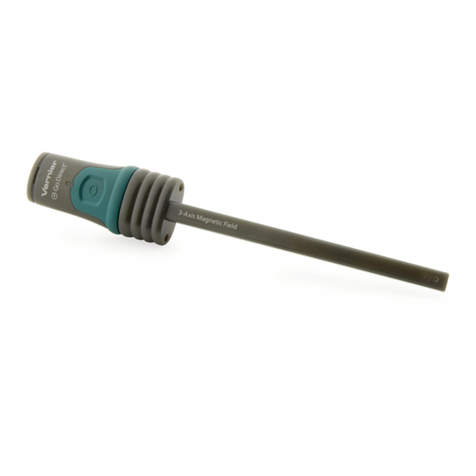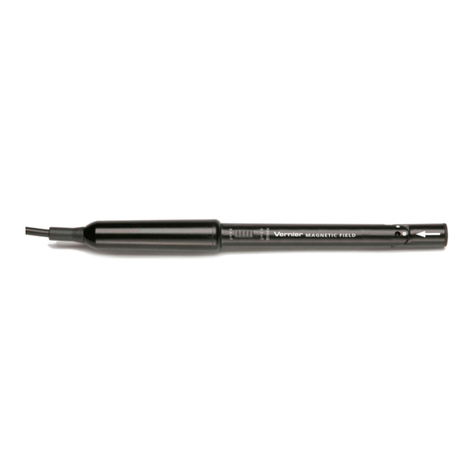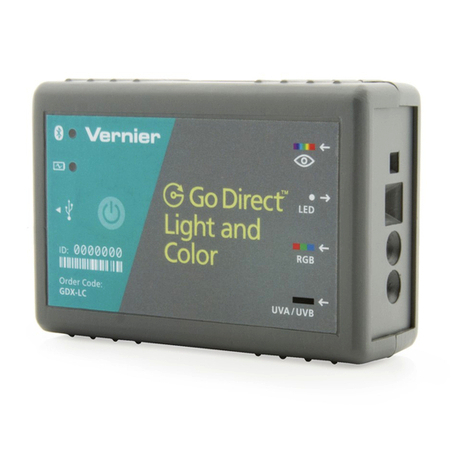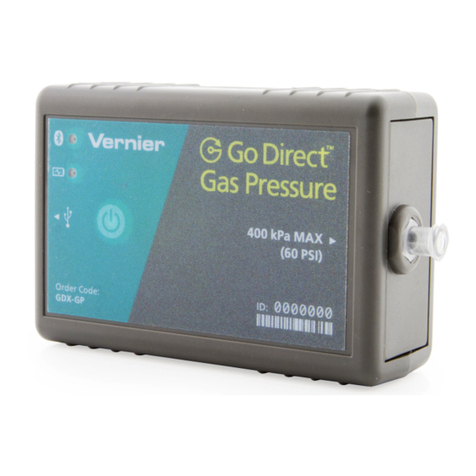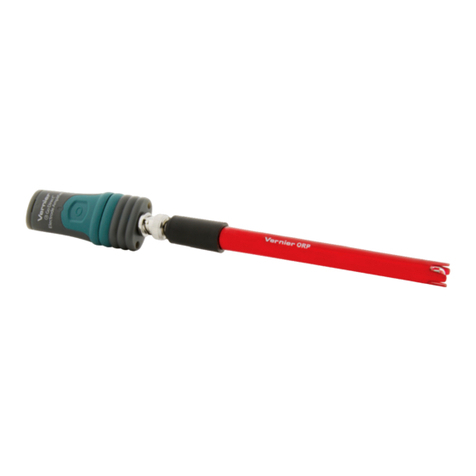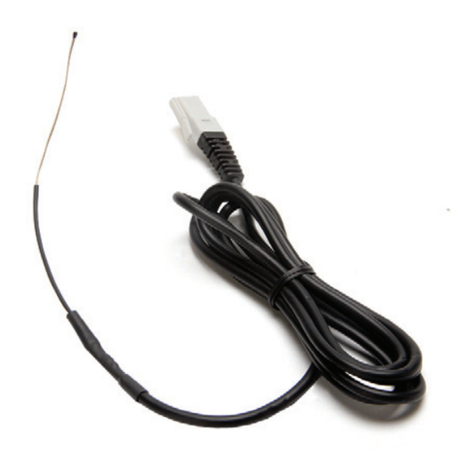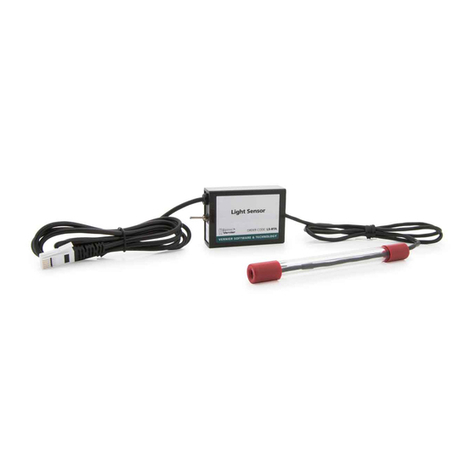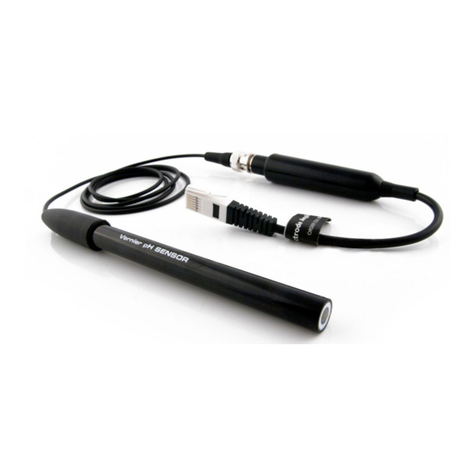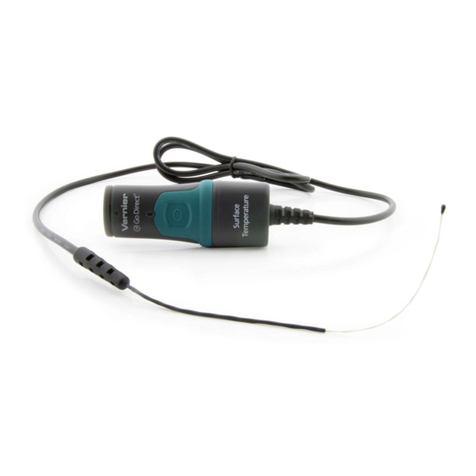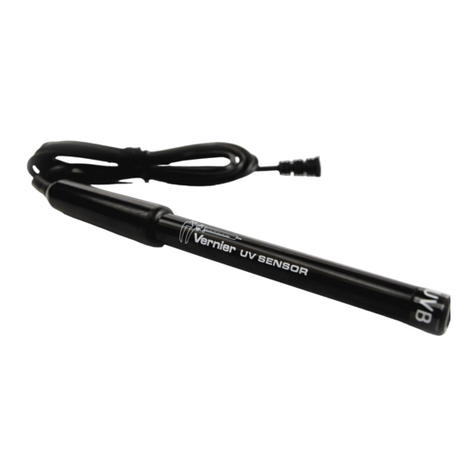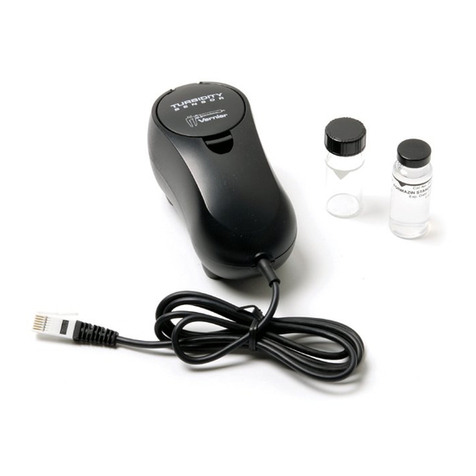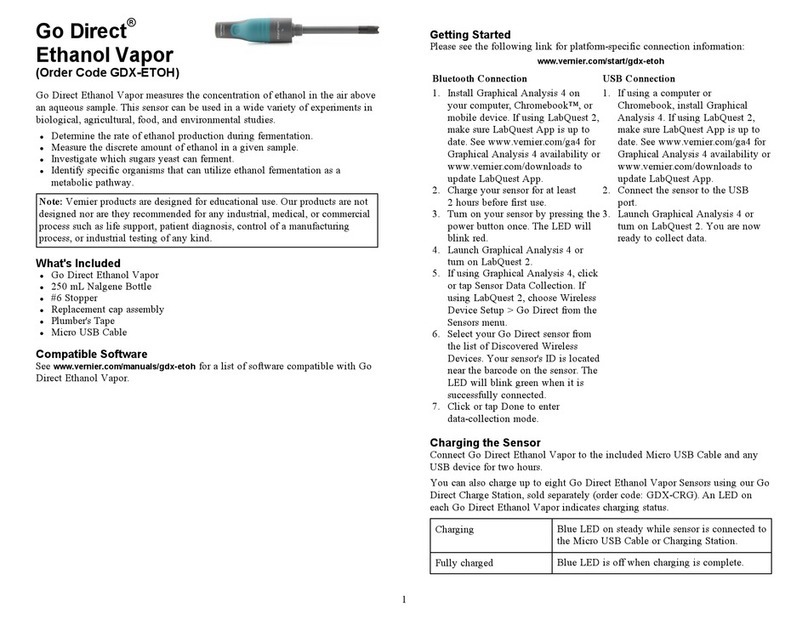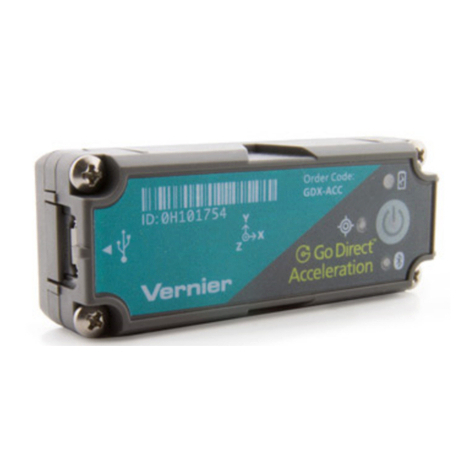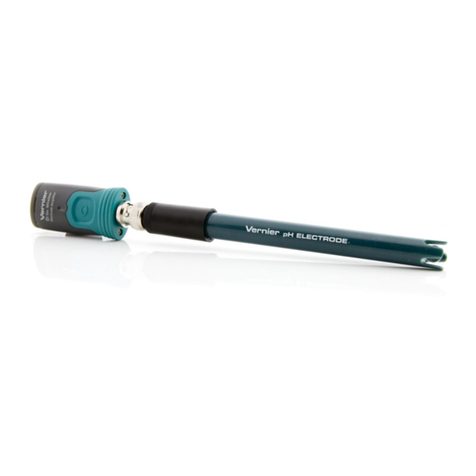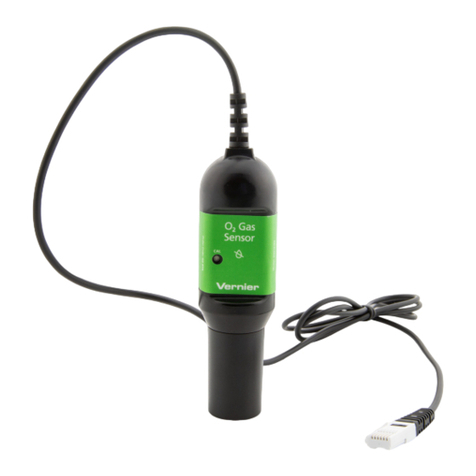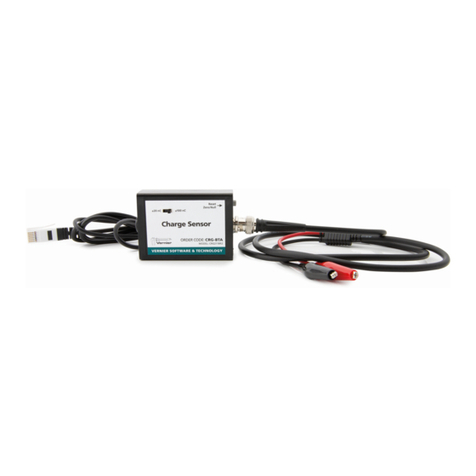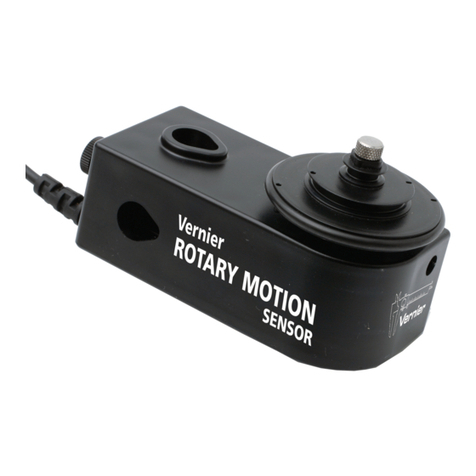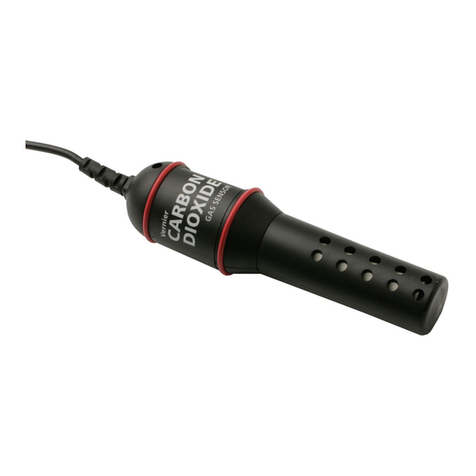2
4. Obtain a water-tight container that is large enough to fully insert the sensor
with room for at least 2 cm on all sides. A plastic shoe box or similar works
well.
5. Connect the Soil Moisture Sensor to the interface and start the data-
collection program.
6. Pour the soil into the container position the sensor as shown. The prongs
should be oriented horizontally, but rotated onto their side–like a knife
poised to cut food– so that water does not pool on the flat surface of the
prongs.
7. Press down on the soil along either side of the sensor with your fingers.
Continue to compact the soil around the sensor by pressing down on the soil
with your fingers until you have made five passes along the sensor.
8. Add more soil on top of the compacted soil so that the sensor is buried at
least 3 cm below the soil surface.
9. Compact the soil again using a clenched fist.
10. Enter the calibration portion of the data-collection program and record the
voltage reading from the sensor. Note: In this method, entering the
calibration portion of the program is used only to obtain a raw voltage
reading from the sensor. You will not be completing a typical 2-point
calibration in the software.
11. Use a soil core tool to take three volumetric soil samples adjacent to the
sensor.
a. Insert the sampling cylinder fully into the soil.
b. Remove the soil core.
c. Dispense the core into a drying jar.
d. Weigh and record the mass of the jar plus soil.
e. Repeat Steps a–d for two additional core samples.
12. Remove the sensor from the soil.
13. Decide on a standard volume of distilled water that will increase the water
content by 3 to 10% for each measurement. If you are unsure about the
amount of water to add, measure the volume of soil you are using. Use a
volume of distilled water equal to 5% of the volume of the soil.
14. Add one aliquot of distilled water to the soil in the amount decided upon in
Step 13. To avoid clumping, add the water in small amounts, mixing
thoroughly.
15. Replace the sensor in the soil. Press down on the soil along either side of the
sensor with your fingers. Continue to compact the soil around the sensor by
pressing down on the soil with your fingers until you have made five passes
along the sensor.
4. Connect the Soil Moisture Sensor to the interface and start the data-
collection program.
5. Pour the soil into the container and position the sensor as shown. The
prongs should be oriented horizontally, but rotated onto their side–like a
knife poised to cut food–so that water does not pool on the flat surface of
the prongs.
6. Press down on the soil along either side of the sensor with your fingers.
Continue to compact the soil around the sensor by pressing down on the soil
with your fingers until you have made five passes along the sensor.
7. Add more soil on top of the compacted soil so that the sensor is buried at
least 3 cm below the soil surface.
8. Compact the soil again using a clenched fist.
9. Enter the calibration routine of your program. Keep this first calibration
point and assign a value of 0. This represents 0% volumetric water content.
10. Remove the sensor from the soil.
11. Determine the approximate volume of soil used. This can be done by
packing it into a large, graduated beaker.
12. Return the soil to the calibration container.
13. Obtain a volume of distilled water that equals 45% of the volume of the
soil. If, for example, you used 3500 mL of soil, you would obtain 1575 mL
of distilled water.
14. Add the distilled water to the soil and mix well.
15. Position the sensor in the wet soil, again making sure the sensor is
completely covered and that there are no gaps between the soil and the
sensor.
16. Keep this second calibration point, assigning it a value of 45. This
represents 45% volumetric water content.
17. Your sensor is now calibrated for this soil type. If you are using LoggerPro
3, you can save the calibration directly on the sensor. If not, you may want
to record the calibration values for future use.
Calibration Method 2: Multiple-Point Calibration
This method is more accurate, but requires more time and effort than Method 1.
1. Obtain and number 12 drying jars. The jars must be able to withstand the
105°C temperature of the drying oven.
2. Weigh and record the mass of each jar.
3. Prepare the dry soil by breaking up large clods until all soil fits through a
5 mm screen. Note: The soil should be fairly dry, but does not need to be
oven-dry for this method.
